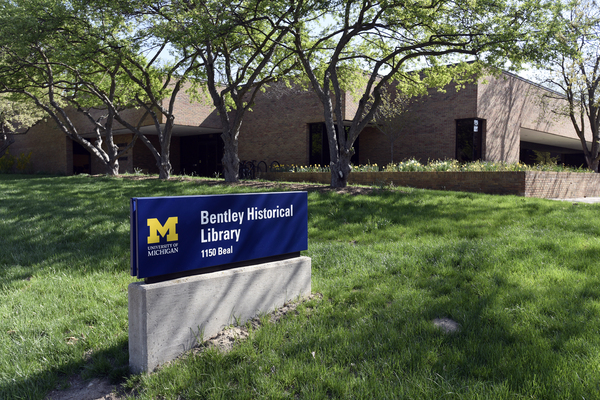The University of Michigan's highest governing body is the Board of Regents. The Regents deal with virtually every aspect of university policy and campus life. The records of the Regents reflect this broad range of interests and authority. This record group contains exhibits from meetings beginning in 1899. These exhibits are the most complete record of the actions of the Regents, supplementing and detailing the published minutes
Proceedings of the Board of Regents. Additional documentation in this record group includes manuscript minutes, 1837-1870, correspondence, material by and about the Regents, photographs, audio recordings of meetings, 1977-2011, and material on recent presidential searches.
As the official governing body of the university, the Regents deal with virtually every aspect of university policy and life. The records of the Regents--which includes exhibits of Regents' meetings, topical files, correspondence files, audio and visual material, and archived web content--reflect this broad range of interests and authority. But while the documentation is wide-ranging, it is not continuous. Certain types of records are continually before the Regents, particularly information regarding salaries, leaves of absence, appointments to faculty positions, and formal approval of degrees conferred upon students. More often, however, the Regents are presented with a specific problem and asked to resolve it through the creation of policy. After the creation and successful implementation of a policy, the situation which caused the issue to arise is usually no longer a matter of Regental concern. The Regents' records reflect this pattern of action. Issues arise, are resolved, and then are supplanted by new concerns.
Also included in this collection are a number of documents from predecessor institutions. Of particular note is the Land Grant from the United States to the University of Michigan, 1824, which details the sections of land given to the Trustees of the University of Michigan by the power vested in Lewis Cass (as Superintendent of Indian Affairs in the Territory of Michigan) by section 16 of the Treaty at the Foot of the Rapids (Treaty of Fort Meigs), 1817, and section 6 of the Treaty of Detroit, 1807. By treaty, the chiefs, sachems, and warriors of four Indeginous nations, the Ottawa (Odawa), Ojibwe (Ojibwa, Chippewa), Wyandotte (Wyandot), and Potawatomi (Bodéwadmi, Potawatomie, Patawatima) ceeded the land northwest of the Ohio river to the United States of America. In the Treaty at the Foot of the Rapids, the chiefs, sachems, and warriors of the Wyandotte, Seneca (Onödowáʼga), Delaware (Lenape), Shawnee (sawanooki), Potawatomi, Ottawa and Ojibwe ceeded the rest of their lands within the Ohio territory to the United States. In return, among other promises, the Ottawa, Ojibwe, and Potawatomi tribes were promised six sections of land to be reserved for the rector of St. Ann Catholic church, for religious practice; and the college of Detroit, for the future education of their children.
